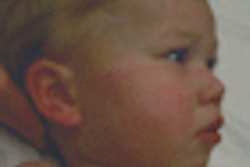Despite the recent attention on adverse patient reactions to contrast media, researchers from the Mayo Clinic in Rochester, MN, found that CT and MRI contrast media actually have very low rates of adverse effects, according to a study published in the October issue of the American Journal of Roentgenology.
The research team, led by Dr. Christopher Hunt, found only 19 cases of severe contrast reactions over a four-year period among nearly half a million administrations of low-osmolar iodinated CT contrast and gadolinium-based MRI agents. In addition to finding a low adverse event rate, the group discovered that the effects of contrast on patients were typically mild and were managed within the radiology department, with additional treatment or observation rarely required (AJR, October 2009, Vol. 193:4, pp. 1124-1127).
Adverse effects
From 2002 to 2006, the Mayo Clinic administered a total of 456,930 contrast doses over the four-year period in its outpatient, inpatient, and emergency departments. Among these doses, 298,491 administrations were of low-osmolar iodinated CT contrast and 158,439 were of gadolinium MRI contrast. No high-osmolar iodinated CT contrast agents were given at Mayo during that time.
In their retrospective review, the researchers defined an adverse effect as a reaction occurring in the radiology suite during contrast administration or within 30 minutes of administration.
The analysis identified 522 adverse effects (0.11%). Of these, 458 adverse effects (0.15%) were associated with low-osmolar iodinated contrast and 64 (0.04%) were reported with gadolinium contrast.
Of the 522 cases, 423 patients (81%) experienced what researchers described as "mild" adverse effects of nausea, vomiting, and rash. Low-osmolar iodinated contrast was used in 374 cases (82%) with mild adverse effects and gadolinium was used in 49 cases (77%).
Adverse effects of contrast agents
|
||||||||||||||||
| Source: Mayo Clinic, American Journal of Roentgenology |
The remedies for the adverse effects included observation and administering diphenhydramine. The need to send a patient to the emergency department was rare, the study noted.
'Severe' cases
The review also found 19 cases (4%) of "severe" adverse reactions among the 522 patients who did not handle the contrast well. Fifteen patients were given the low-osmolar iodinated agent, whereas four patients received gadolinium-based contrast.
"Seven patients who had a severe adverse effect after administration of low-osmolar iodinated contrast material needed epinephrine, constituting 1.5% of events related to these agents," the authors wrote. "Two patients who had a severe adverse effect after administration of gadolinium contrast material needed epinephrine, constituting 3.1% of all events related to these agents."
Ten patients with adverse effects of low-osmolar iodinated CT contrast and six patients with adverse effects of gadolinium MRI contrast required emergency room treatment.
There was one death between 2002 and 2006, which the study presumed was caused by low-osmolar iodinated contrast. The patient was a 79-year-old man who had no symptoms immediately after contrast administration and the imaging examination. Records showed that he experienced sudden cardiovascular collapse waiting for transport. Efforts to resuscitate him were unsuccessful.
Although the contrast agent was not directly implicated in the death, the researchers included the death in the study because the event occurred less than 20 minutes after the contrast agent was administered.
'Risk still exists'
Even with an adverse effects rate of less than 1% for both low-osmolar iodinated and gadolinium contrast, the Mayo researchers cautioned that "risk still exists, even among patients without a history of contrast reactions. Although no deaths occurred in the gadolinium contrast material group in this study, given the low mortality due to adverse contrast effects, absence of risk should not be inferred."
Most of these adverse effects can be successfully managed in the radiology suite, the authors added; however, "severe adverse effects can necessitate aggressive treatment and transfer for emergency care. Careful review of reporting and treatment protocols is necessary to prevent morbidity and mortality."
Several study limitations were noted. The retrospective review required self-reporting by either a radiologist or a nurse, and there was "inherent selection bias toward more accurate reporting of more severe events." In addition, there was an absence of information about subsequent adverse effects or previous contrast-related adverse effects at other institutions.
The researchers added that the limitations were not significant and "only minimally affected the results of the study."
By Wayne Forrest
AuntMinnie.com staff writer
September 21, 2009
Related Reading
Gadolinium-based contrast agents alone don't cause NSF, study finds, July 8, 2009
JHU study: Screening patients prior to MRI lowers NSF risk, February 4, 2009
ACR committee works toward gadolinium-based contrast policy, October 24, 2008
Hemodialysis helps prevent NSF in some patients, study finds, August 19, 2008
Incidence of nephrogenic systemic fibrosis varies with contrast agents, July 24, 2008
Copyright © 2009 AuntMinnie.com



















